April 23rd, 2018 was St. George’s Day. For us, though, it was the start of our second International Patient Workshop. This brought together 89 people – AKU patients, supporters, researchers and staff – from around the world to network and share advice. Patients came from as far off as Canada, the United States, Belarus, Jordan, Brazil and La Réunion. For the first time in the history of the AKU Society, the workshop took place over two packed days.
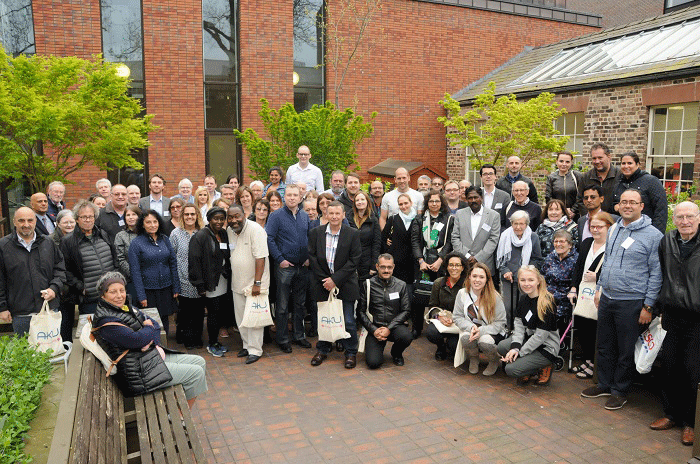
We held the workshop in Liverpool’s Bluecoat centre. Liverpool was the home of the late AKU patient Robert Gregory, who founded the AKU Society in 2003 with his doctor Professor Ranganath. The Royal Liverpool University Hospital (RLUH) now hosts the National Alkaptonuria Centre (NAC), the only specialised AKU centre in the world. Together with the University of Liverpool, it is also part of vital AKU research.
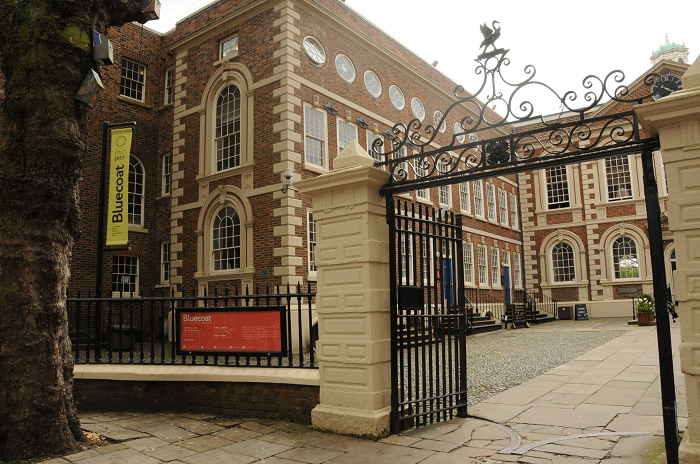
Hannah Harrison, our Patient Support Manager, had organised everything. In each hotel room were eight branded AKU chocolates, presented in elegant bags. On arrival, Hannah greeted each delegate and handed them their delegate pack. This was full of extra information for the event. Our three newly designed leaflets (‘What is Alkaptonuria’, ‘How Alkaptonuria is Inherited’ and ‘The Alkaptonuria Society’) were very popular.

After a quick introduction from Hannah, we were ready to start. First to speak was Dr. Lynn Greenhalgh, a clinical geneticist at Liverpool Women’s NHS Foundation Trust Hospital. She gave a clear explanation of the genetics behind AKU. AKU is what is known as an autosomal recessive condition. This means that for the disease to develop, a patient must have two copies of the affected gene – one inherited from the mother and one from the father. This is very rare. Plus, in most cases, the parents only carry one copy of the gene themselves. They don’t have the disease and are known as ‘healthy carriers’.
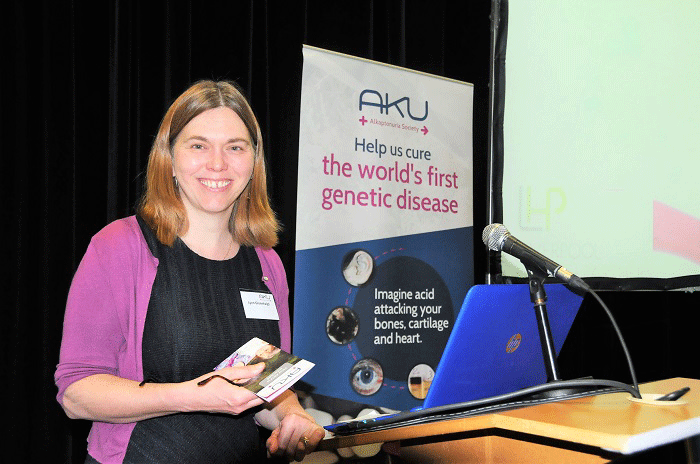
Next, there were talks about diet. Some patients with AKU take a drug called nitisinone, which treats their condition. Although studies have not yet finished, scientists have proven that it stops a toxic acid called homogentisic acid building up in the blood. Unfortunately, it also has a side-effect. It produces too much of a chemical called tyrosine, which can affect the eyes. This problem is less likely if patients eat a diet low in tyrosine. Shirley Judd, NAC dietitian, was there to tell us exactly what to eat. We also heard from representatives of two clinical nutrition companies, Nutricia’s James Smith and Vitaflo International’s Rachael Frank. These make dietary products to help people with AKU who take nitisinone.

All this talk about diet made us hungry. We were lucky that Hannah had scheduled lots of breaks. The catering was excellent – the branded cakes especially.

The afternoon began with a talk from Tanisha Spratt, a postgraduate student at the University of Cambridge. Tanisha is a medical sociologist. Over the course of her PhD research, she has interviewed patients in the United States to to investigate the lived experiences of people with AKU and vitiligo. Her stories were fascinating.
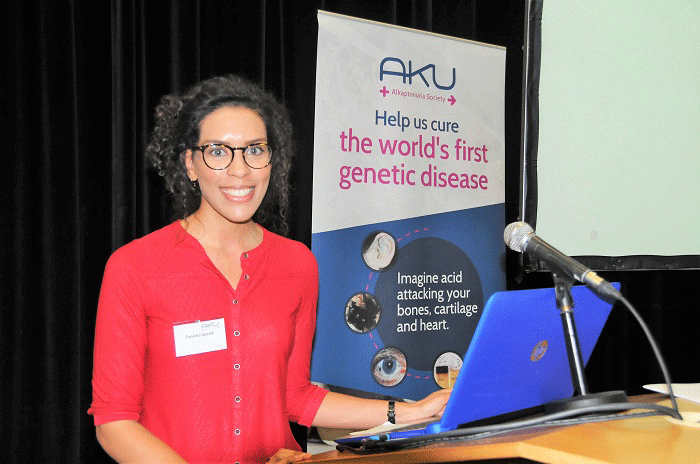
Dr. Andrew Jones came next. An anaesthetist at RLUH, Dr. Jones has been the NAC’s pain specialist for two years. Many AKU patients, unfortunately, suffer from pain daily. They were eager for advice. Next, we heard about the latest scientific research into AKU. Professor Ranganath, chief investigator for the DevelopAKUre international clinical trials into the use of nitisinone as an AKU treatment, told us how successful nitisinone had been shown to be so far. Professor Jim Gallagher of the University of Liverpool and his PhD student Juliette Hughes also told us about their research. They are looking at the elevated tyrosine associated with nitisinone (see above) and have plenty of exciting ideas to solve it – watch this space.

Day one ended with a fantastic three course dinner, served in the Bluecoat’s restaurant. While dining on roast beef and Eton mess, delegates got to hear some personal stories. Jim Fish, from Canada, and Flavia Mayrink, from the AKU Society in Brazil, talked about growing up with AKU. Nick Sireau, our CEO, reminded everyone how he threw himself into the AKU Society when both his sons were diagnosed with the disease.

Day two was opened by Dr. Martin Lau from Arthritis Action, which helps people with arthritis (one of the symptoms of AKU) manage their condition with less pain. Gabor Barton and Hannah Shepherd, gait analysts at Liverpool John Moores University, spoke next, providing more technical advice. Patients were very interested in how to improve the way they walk to reduce pain. They asked a lot of questions.
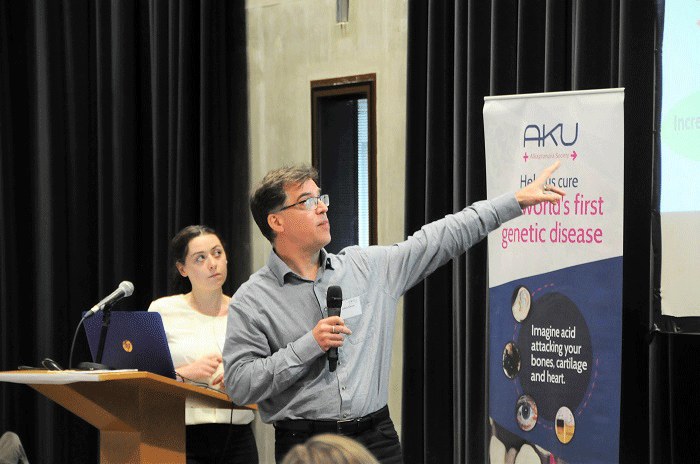
Dr. Jemma Kerns, an AKU researcher from Lancaster University, told us about a new scientific technique called Raman spectroscopy. This uses lasers to investigate the effect of AKU on patients’ ears. If it is introduced at the NAC, we will no longer need to perform physical biopsies on ears by cutting bits out of them. Then came Sophie Taylor and Nadia Loftus, NAC physiotherapists, who talked about exercise in AKU. Exercise is a real must for patients – although some kinds are better than others. Finally, it was time for Reece, the AKU Society’s Admin and Communications Officer. He made sure patients knew how to keep in touch with the AKU Society after they left.
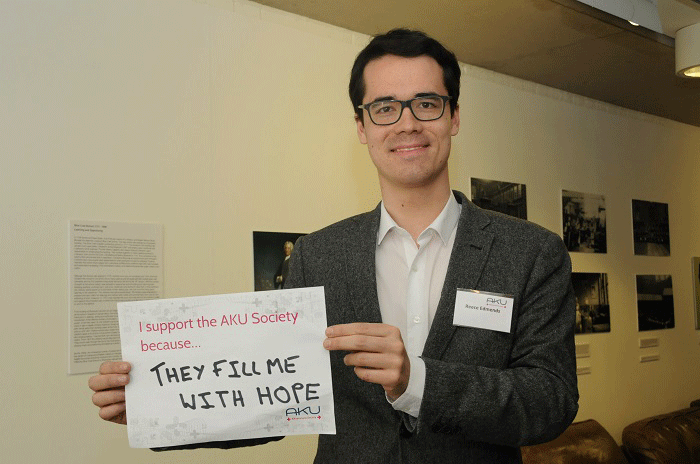
Reflecting on the workshop, and the AKU Scientific Workshop on April 24th (for scientists and clinicians), Nick Sireau said that we are living through a golden age of AKU research. Never before have the medical and scientific worlds been so interested by AKU. At the heart of what we do, though, are still the patients. As they left, many said they felt less isolated. They were not alone with their condition and there was hope for the future.
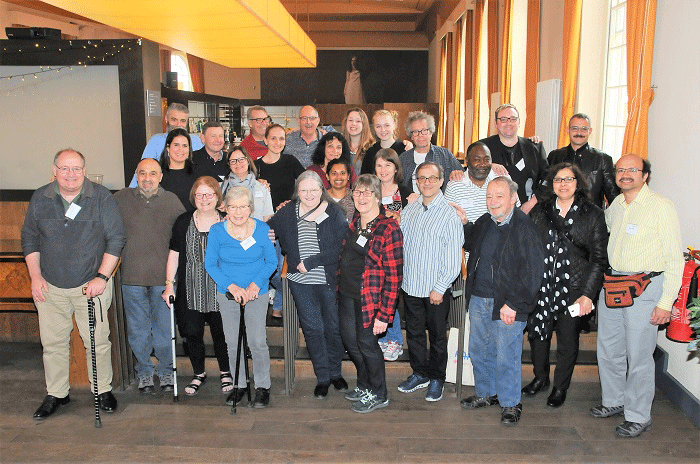
We’d like to thank Sobi for sponsoring the workshop. Thank you also to Oatly and Munchy Seeds for donating products for patients to enjoy, and to Two Visual Thinkers, our graphic scribes.
